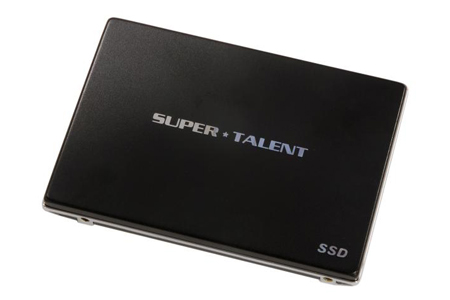Super Talent's MasterDrive and UltraDrive series of SSDs aren't exactly slow, but in an effort to raise the bar another notch, the California-based company has teamed up with SandForce to develop its next line of solid-state drives.
Dubbed the TeraDrive FT2, Super Talent's latest makes use of a SandForce SF-1500 SSD processor to deliver read and write speeds of up to 250MB/sec.

The enterprise-orientated drive, designed for use in database servers and available in capacities ranging from 50GB to 200GB, makes use of a SATA 3Gbps interface and promises 30,000 input/output operations per second.
Boosting the drive's enterprise credentials is RAISE technology for enhanced reliability and DuraWrite technology for increased endurance, along with "state-of-the-art wear levelling" and error-correction code capable of correcting up to 24 symbols per 512 byte sector.
Super Talent joins OCZ in becoming the latest SSD manufacturer to incorporate SandForce technology, and states that its TeraDrive FT2 - in both single-level-cell (SLC) and multi-level-cell (MLC) flavours - is sampling to OEMs now and will enter volume production in Q1.
The company hasn't yet divulged pricing, but stay tuned as we reckon there's a good chance SandForce technology will filter through to Super Talent's high-end consumer drives in the coming months.













